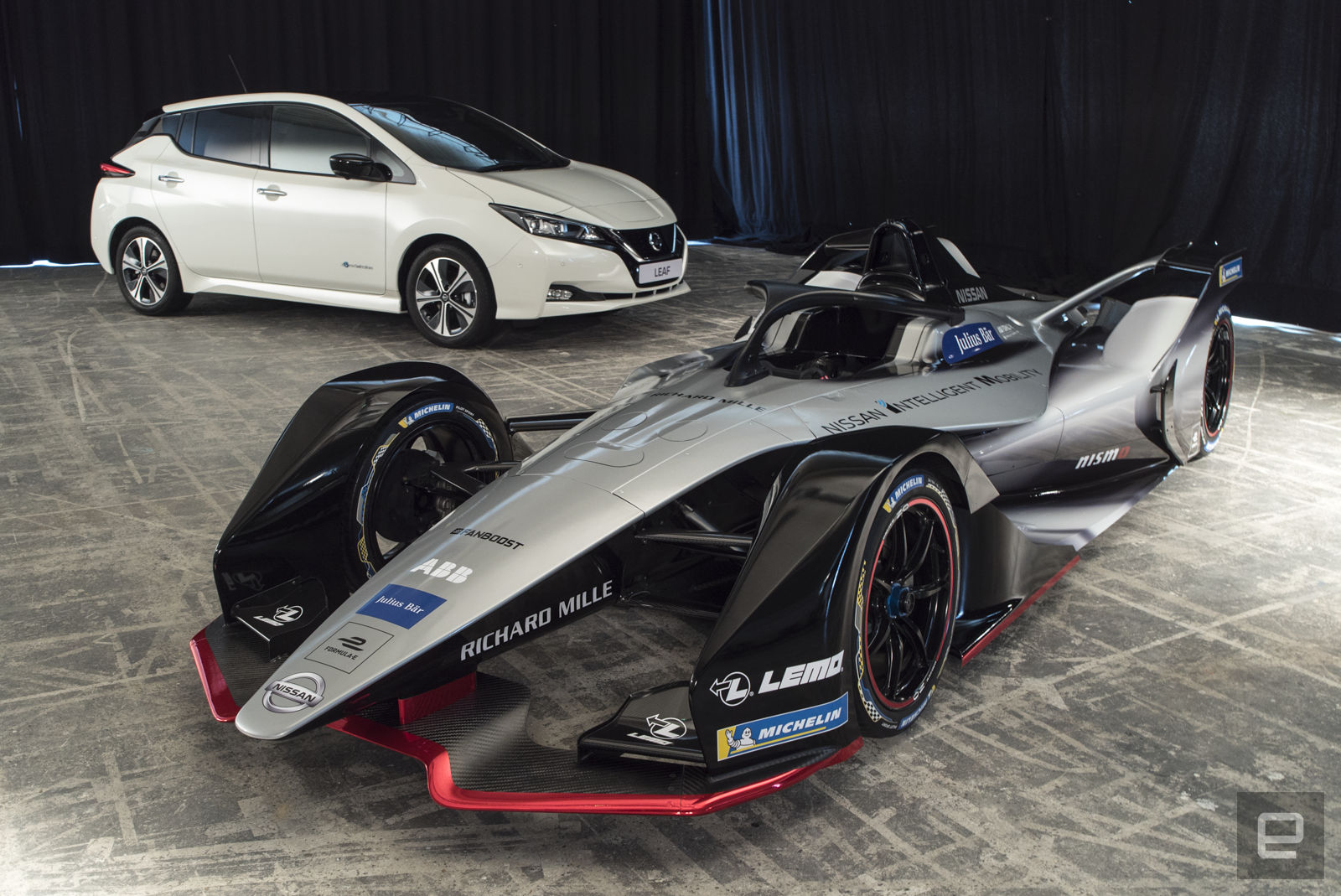Nissan’s debut Formula E design is inspired by the Doppler effect


It's hard to believe that Nissan, which sold more EVs last year than Tesla and every other automaker, has yet to race in Formula E. However, Nissan announced late last year that it would become the first Japanese automaker to join the electric-racing circuit for the 2018-19 season. Now, at the Geneva Motor Show, it has unveiled its season 5 Formula E car with a striking "Doppler-effect" color scheme and all-new powertrain package.
The new Gen 2 Formula E cars for next season represent the biggest shift in the circuit's technology yet. Battery capacity will increase from 28 mWh to 54 mWh, letting drivers complete a race without changing to another car as they've been forced to do so far.
"We just launched the Nissan Gen 2 Leaf, which has increased battery range and power, same as the Gen 2 Formula E car for season five," Nissan global-motorsports director Mike Carcamo told Engadget. "We're really excited about season five, because it really brings out the next step forward in electric racing." As before, Formula E will supply all teams with the same carbon-fiber chassis. The manufacturers can then install their own electronics, inverters, gearboxes and motors to gain a competitive edge. Most essentially for branding, they can get creative with the livery or paint scheme.
The Gen 2 cars look like no other formula car, with a futuristic, Blade Runner-esque vibe. That's part due to the aerodynamics. In place of a rear wing, a venturi flares out over the back wheels. It's there mainly to reduce drag, as Formula E cars don't require the massive downforces needed on much faster F1 racers.
You might also expect a Nissan race car to be white and red, but the look of the Gen 2 EVs inspired the design team to try for something a little more... intimidating. As such, it sports black, white and patterned grays, with red only appearing on the accents.
Nissan has zero experience in Formula E despite its rich motorsports history, so it's hard to say how the car will do. But just sitting there, it looks like it's going about 300 miles per hour. The texturing and gradients, Nissan said, were inspired by the sonic pulse created by the Doppler effect.
"At first glance, the season five Formula E car looked to our design team like an EV-powered supersonic bird in flight," said Nissan's senior VP of global design, Alfonso Albaisa. "Formula E racers are virtually silent, with explosive speed bursts. Thus, naturally, we turned to Doppler when designing the livery."
We'll have to take their word for that, but for the powertrain, Nissan drew on its experience with the Leaf for Formula E, particularly when it comes to range. "One of the main factors and important aspects of Formula E racing is energy usage and efficiency," said Carcamo. "And a lot of that experience can be put to use on the race track. At the same time, the harsh environments of racing will help develop future road cars as well."
As with any racing endeavor, however, Nissan's venture into Formula E is mainly a way to draw eyeballs to its brand and "intelligent mobility" technology. And the urban-based circuit provides the ideal way to promote the Leaf, which packs both EV and self-driving tech.
"The heart of cities where Formula E operates is where mobility solutions are most necessary," Carcamo said. "Highlighting those issues, bringing them up and also showing [...] the fun part about EVs is something that Nissan is really excited to share with its fans."
via Engadget RSS Feed "http://ift.tt/2FwdFvL"
Comments
Post a Comment